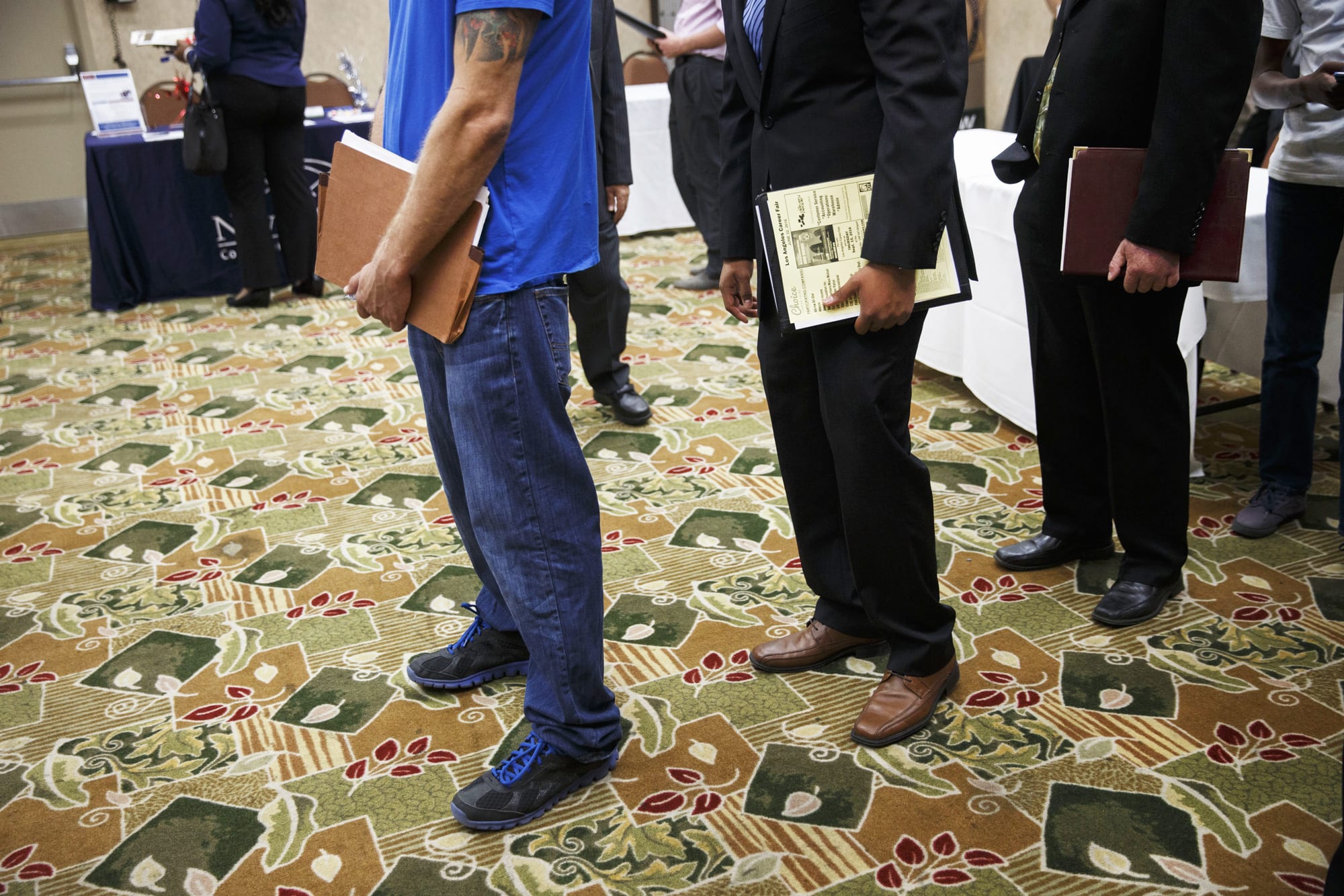Job seekers wait in line to speak with representatives during a Choice Career Fair in Los Angeles.
Patrick T. Fallon | Bloomberg | Getty Images
The number of Americans filing for unemployment benefits fell last week, pointing to continued labor market strength, though applications for the prior week were much higher than initially estimated.
Initial claims for state unemployment benefits dropped 7,000 to a seasonally adjusted 216,000 for the week ended Jan. 25, the Labor Department said on Thursday. Claims data for the prior week was revised to show 12,000 more applications received than previously reported.
Economists polled by Reuters had forecast claims increasing to 215,000 in the latest week. The Labor Department said only claims for Alabama were estimated last week.
The four-week moving average of initial claims, considered a better measure of labor market trends as it irons out week-to-week volatility, fell 1,750 to 214,500 last week.
The Federal Reserve on Wednesday kept interest rates unchanged, noting that the “labor market remains strong” and “economic activity has been rising at a moderate rate.”
Labor market strength is helping to keep the longest economic expansion, now in its 11th year, on track, despite a prolonged slump in business investment. The economy created 145,000 jobs last month after adding a massive 256,000 positions in November. The economy needs to create roughly 100,000 jobs per month to keep up with growth in the working age population.
Thursday’s claims report also showed the number of people receiving benefits after an initial week of aid declined 44,000 to 1.70 million for the week ended Jan. 18. The four-week moving average of the so-called continuing claims decreased 6,250 to 1.76 million.
The continuing claims data covered the week during which the government surveyed households for January’s unemployment rate.
The four-week average of claims dropped 51,000 between the December and January survey weeks, suggesting some improvement in the unemployment rate.
The jobless rate is near a 50-year low of 3.5% and a measure of labor market slack hit an all-time low of 6.7% in December.


 Signal2forex.com - Best Forex robots and signals
Signal2forex.com - Best Forex robots and signals




